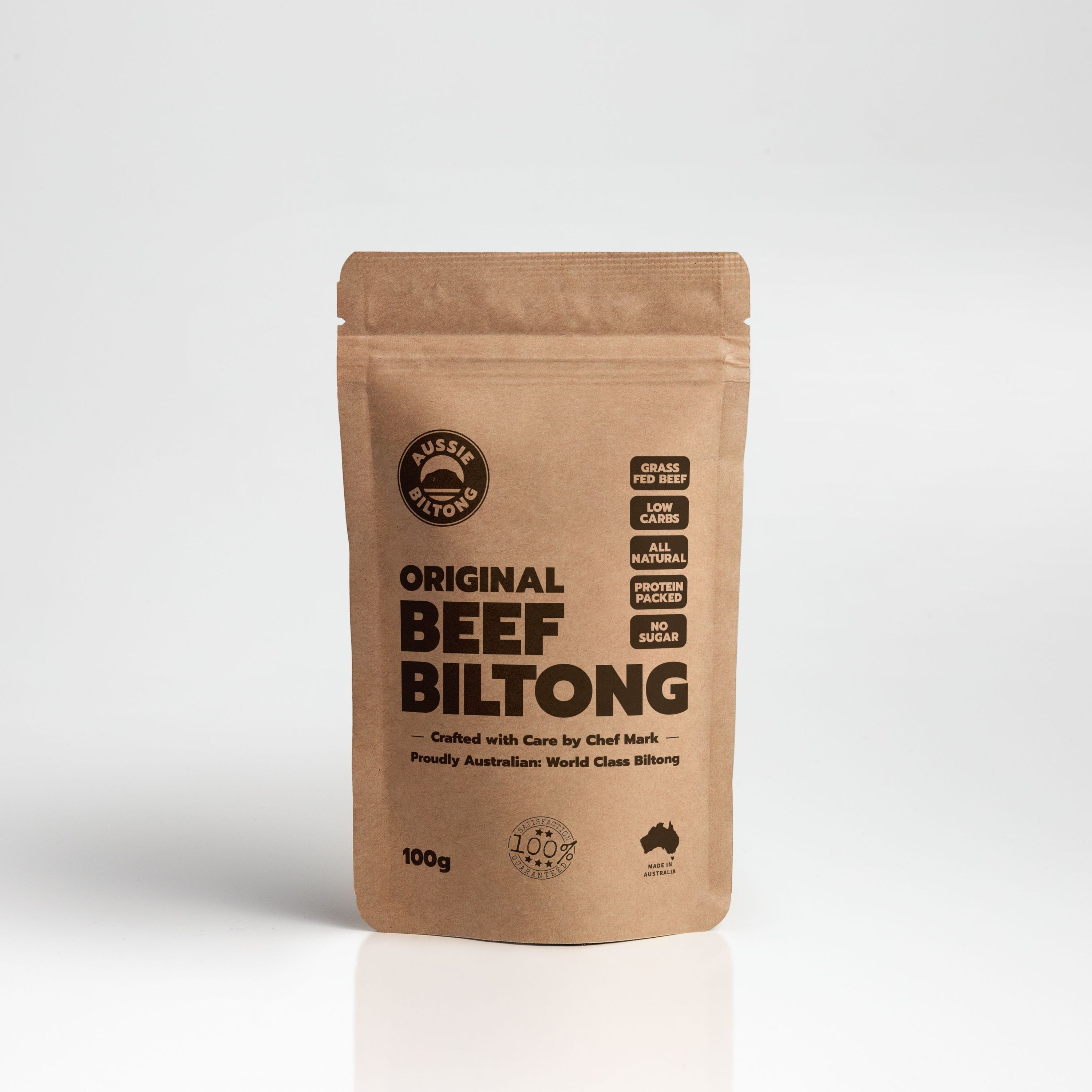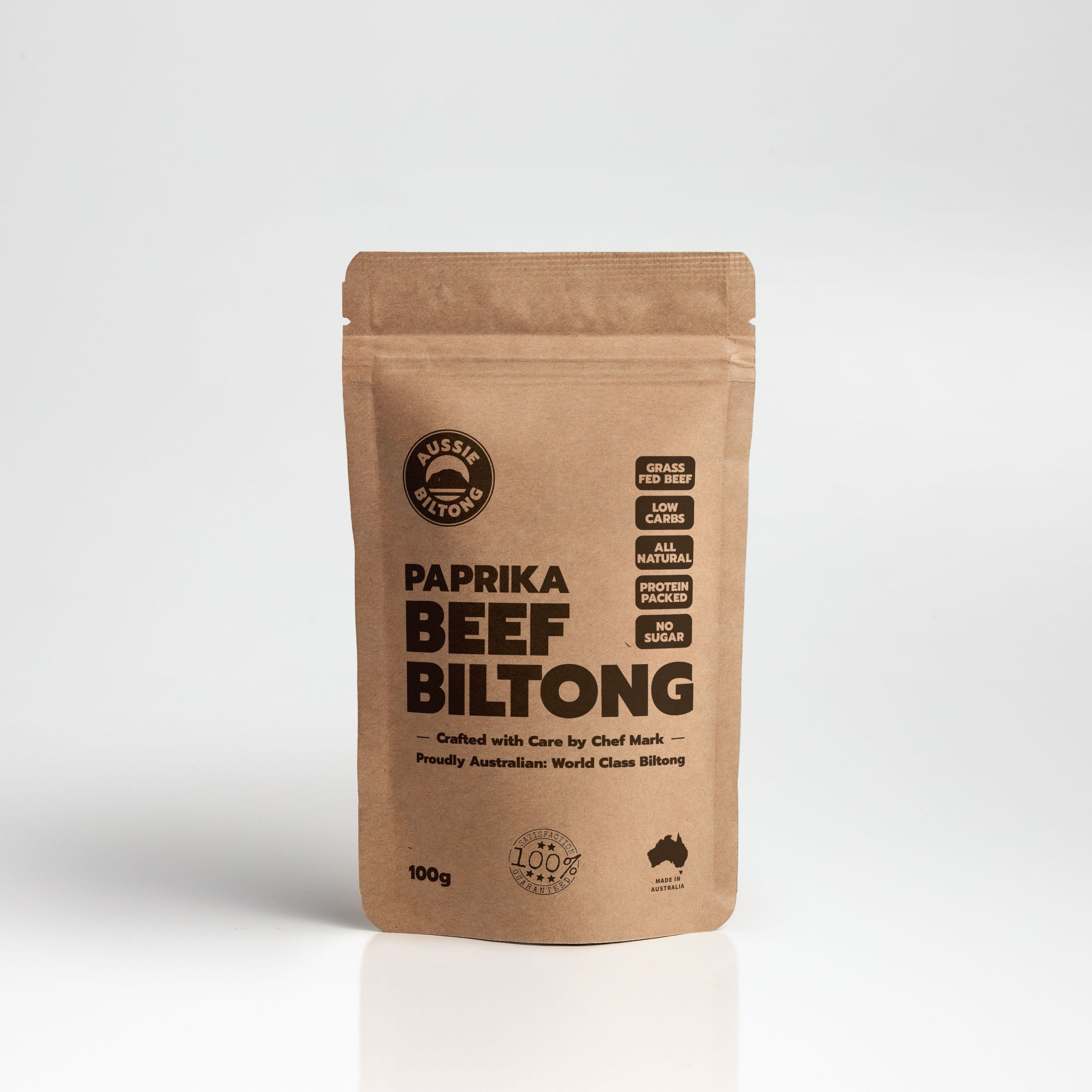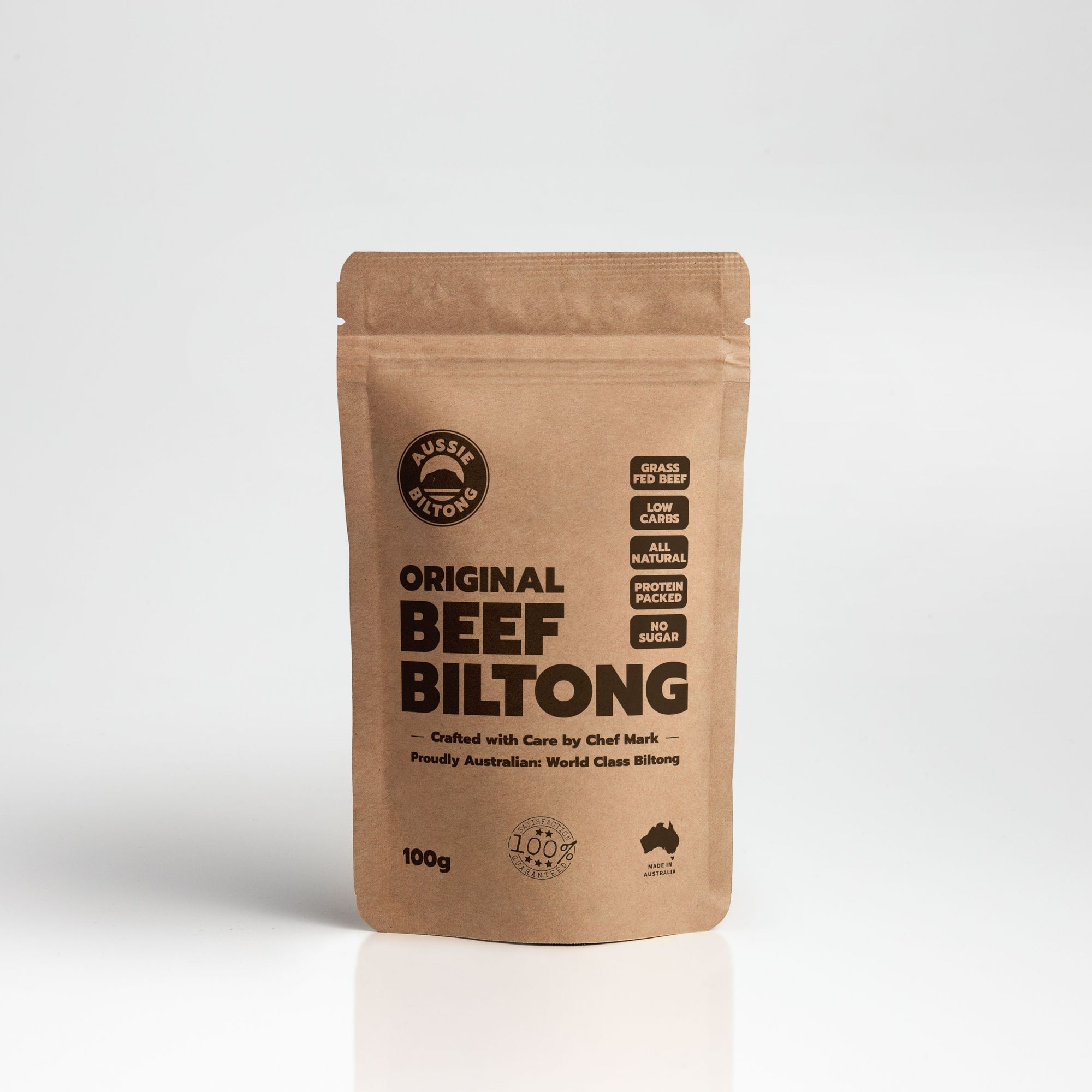Ingredients
- 200–350g biltong
- 1 large onion
- 3–4 garlic cloves
- 1 tsp, grated fresh ginger
- 2 medium tomatoes
- 2 Tbsp tomato paste
- 2 Tbsp peanut butter
- ½ cup beef stock
- Vegetable Oil
By Milan Stojanovic
There's something about slow-cooked food that just hits different, you know? Maybe it's the way your kitchen fills with those deep, savory aromas, or how the flavours seem to get richer with every passing hour. And when you throw biltong into the mix, well, that's when things get properly interesting.
Biltong stew isn't your everyday comfort food. It's got that uniquely South African heart, but here in Australia, we've got all the right ingredients to make it sing. Whether you're craving a creamy biltong stew on a chilly winter evening or looking to impress your mates with a biltong potjie at your next backyard gathering, this dish delivers something special.
Here's the thing, biltong stew takes one of South Africa's most beloved snacks and transforms it into something altogether different. The dried, cured meat softens as it simmers, releasing those deep, spiced flavours into the broth while still maintaining enough texture to remind you exactly what you're eating.
Main Ingredients You’ll Need
To keep things straightforward, here are the essentials for a classic biltong stew serving 4–6:
-
Biltong: 200–350 g, sliced into strips
-
Onion: 1 large, finely chopped
-
Garlic: 3–4 cloves, crushed
-
Fresh ginger: 1 tsp, grated
-
Tomatoes: 2 medium, chopped
-
Tomato paste: 2 Tbsp
-
Peanut butter: 2 Tbsp
-
Beef stock or water: ½ cup
-
Cooking oil: peanut or vegetable
For the creamy biltong stew version, add:
-
Butter or olive oil: 1 Tbsp
-
Mushrooms: 250 g, sliced
-
Full-cream milk: 1 cup
-
Fresh cream: ½ cup
-
Cheddar cheese: ½ cup, grated
Feel free to bulk it out with carrots, potatoes, pasta or rice, depending on your mood.
What Makes Biltong Stew So Bloody Good?
Let's talk about why this works. Biltong itself carries layers of flavour, coriander, black pepper, that distinctive vinegar tang, all packed into intensely savoury meat.
When you add it to a stew, those flavours don't just sit there; they bloom and spread, mingling with whatever vegetables and liquids you've got in the pot.
The beauty of a biltong stew recipe lies in its versatility. You can go traditional with tomatoes, onions, and a hint of peanut butter (yes, really, it's an African thing that adds incredible depth). Or you can lean into the creamy side with milk, fresh cream, and cheese for a slow cooked biltong experience that's rich enough to make you contemplate seconds before you've even finished your first bowl.
Unlike your standard beef stew where you're waiting hours for tough cuts to break down, biltong stew is relatively quick. The meat's already been cured and dried, so you're not sitting around waiting for connective tissue to soften. This is an easy biltong stew in the best possible way, minimal fuss, maximum flavour.
Getting Started: What You'll Actually Need
Right, let's get practical. You can't just chuck any old thing into a pot and call it biltong stew (well, you could, but let's aim higher). The ingredients matter, though they're pleasingly straightforward.
For the star ingredient: You'll want about 200-350 grams of sliced biltong, depending on how meaty you like your stew. Go for pieces that still have a bit of moisture, not bone dry, not dripping wet. That sweet spot where it's properly cured but still has some give. If your biltong's too dry, it can end up a bit chewy even after cooking; too wet and you're basically working with regular beef.
The supporting cast varies depending on which direction you're heading. For a traditional African-style stew, you're looking at onions, garlic, fresh ginger, tomatoes (both fresh and paste), and here's where it gets interesting, peanut butter. Don't skip this. A couple of tablespoons adds a nutty richness that rounds out all those sharp, spiced notes from the biltong.
If you're going down the creamy path (and honestly, why wouldn't you at least once?), you'll need full-cream milk, fresh cream, mushrooms, cheese, cheddar works brilliantly, and maybe some pasta or rice to bulk things out. This version leans more toward comfort food territory, the kind of thing you want when it's pissing down rain and you need something substantial.
The Traditional Route: African Biltong Stew

This version respects the dish's roots. Biltong originated as a preservation method, a way to keep meat edible in the absence of refrigeration, practiced by indigenous Southern African communities long before Dutch settlers arrived and added their own spice mixtures.
Start with a tablespoon of peanut oil in your pot over medium heat. Toss in a chopped onion and let it soften, you're after translucent, not brown. Then add a couple of crushed garlic cloves and about a teaspoon of freshly grated ginger. The smell at this point should be making you question whether you can wait another hour to eat.
Chuck in your chopped tomatoes (two fresh ones will do), let them break down a bit, then stir through two tablespoons each of tomato paste and peanut butter. I know it sounds odd if you've never encountered this combination, but trust the process. The peanut butter doesn't make things sweet; it creates this deep, almost earthy undertone that plays beautifully with the biltong's spices.
Now add your biltong, about 300 grams, sliced into strips. Pour in roughly half a cup of water (or beef stock if you've got it), give everything a good stir, and bring it to a gentle simmer. Cover and let it cook for about 30-40 minutes. The stew will thicken, the biltong will soften just enough, and you'll end up with something that's both familiar and completely unique.
Traditionally, this gets served with sadza (a maize porridge similar to pap) and cabbage, though honestly, rice or crusty bread work just as well. You're after something that'll soak up that rich, nutty sauce.
Creamy Biltong Stew: When Comfort Calls
Here's where things get properly indulgent. The creamy biltong stew takes everything savoury about the meat and wraps it in this luscious, cheese-spiked sauce that's frankly dangerous.
Melt about 50 grams of butter in your pot, or use olive oil if you're feeling slightly virtuous. Sauté a finely chopped onion until soft, then add crushed garlic (two or three cloves, depending on your enthusiasm for the stuff) and sliced mushrooms. A whole punnet of button mushrooms isn't overkill; they add earthiness and bulk.
Once the mushrooms have released their liquid and cooked down, this is where the transformation happens. Add a cup of full-cream milk and half a cup of fresh cream. Some people throw in chicken stock for extra savouriness; others prefer to keep it simple and let the biltong do the talking. Either works.
Bring everything to a gentle simmer, you don't want a rolling boil here, just steady heat that'll let the flavours meld. Then add your biltong (about 250 grams, sliced into bite-sized pieces) and let it sit in that creamy bath for about 10-15 minutes. The meat will soften and release its spices into the sauce.
Finish with grated cheddar, as much as half a cup, stirred through until melted. Season with salt (carefully, biltong's already salty) and black pepper. What you end up with is something that coats the back of a spoon, rich and silky, studded with tender mushrooms and flavourful biltong.
Serve this over pasta, rice, or with a mountain of crusty bread for dipping. It's the kind of meal that makes you contemplate whether wearing stretchy pants to dinner counts as formal attire.
The Potjie Method: Slow, Social, Satisfying
Now, if you're lucky enough to own a biltong potjie (that's a three-legged cast-iron pot, for the uninitiated), you're playing a different game entirely. The potjie isn't just cookware; it's a whole cooking philosophy. Patience, layers, no stirring—it's basically the opposite of how we're taught to cook in a standard kitchen.
The magic lies in the slow simmer over coals, where each layer cooks to perfection without being disturbed. You build flavour from the bottom up: onions, garlic, bacon (because why not?), mushrooms, then your biltong, finally adding liquids like stock, wine, cream, and milk gradually.
Heat control matters here, too hot and you'll burn the bottom; too cool and nothing cooks properly. You want moderate, evenly spread coals and a gentle, almost meditative pace. This isn't weeknight cooking; it's weekend cooking, the kind where the process is as enjoyable as the meal itself.
A proper biltong potjie might include pasta stirred through at the end, creating this one-pot wonder that's part stew, part pasta bake, entirely delicious. The lid stays on for most of the cooking time, trapping steam and forcing flavours to circulate and intensify.
Making It Easy: Your Weeknight Version
Look, not everyone has three hours to babysit a pot over coals. Sometimes you just need dinner on the table without the ceremony. That's where the easy biltong stew comes in, all the flavour, half the fuss.
Use one pot (a heavy-bottomed one if you've got it). Sauté your aromatics, onion, garlic, maybe some diced carrots or potatoes if you're feeling vegetable-inclined. Add your biltong and whatever liquid base you're using: stock, wine, even just water works in a pinch.
If you're going creamy, stir in your dairy components, milk, cream, cheese, toward the end of cooking. If you prefer a lighter, broth-based version, stick with stock and maybe some tomatoes.
Total cooking time? About 30-40 minutes once everything's in the pot. You can prep your ingredients while the onions soften, meaning from decision to dinner is under an hour. That's weeknight-friendly by any measure.
The Slow-Cooked Magic
Slow cooked biltong deserves its own moment here. When you give this stew time, a couple of hours at low heat rather than a quick blast, something beautiful happens. The biltong breaks down just enough to become tender without losing its character. The spices have time to properly infuse the liquid, creating layers of flavour that quick cooking simply can't match.
This is where a slow cooker or a low oven (around 150°C) becomes your friend. Everything goes in, you set it, and then you walk away. Come back a few hours later and you've got this deeply flavourful stew where every component has had time to get properly acquainted.
The texture changes too. Quick-cooked biltong retains more chew; slow-cooked becomes almost melt-in-your-mouth, especially if you've chosen pieces with a bit of fat marbling.
What to Serve Alongside
Biltong stew is hearty, but it benefits from something to balance all that richness. Rice is the obvious choice. plain steamed rice will soak up the sauce without competing for attention. Mashed potatoes work beautifully with the creamy versions, creating this absolutely glorious carb-on-carb situation.
Crusty bread is never wrong. Something with a good crust that you can use to mop up every last bit of sauce from your bowl. If you're feeling ambitious, make some potbrood (pot bread), it's traditional with potjie cooking and pairs perfectly with any biltong stew variation.
For vegetables, keep them simple. Steamed greens, a fresh salad, maybe some roasted carrots. You want something to cut through the richness without overwhelming the main event.
Tips for Getting It Right Every Time
Choose your biltong wisely. Not all biltong is created equal. For stewing, you want pieces that still have some moisture, fully cured but not completely desiccated. If you're in Australia, several specialty shops stock proper South African biltong, or you can make your own (though that's another article entirely).
Don't oversalt. This is crucial. Biltong is already salty from the curing process. Taste before adding any additional salt, especially if you're using stock cubes or adding cheese. You can always add more; you can't take it away.
Temperature matters. Whether you're going quick or slow, you want a simmer, not a boil. Aggressive heat can make the biltong tough and cause dairy-based sauces to split. Gentle and steady wins this race.
Layer your flavours. Start with aromatics, add spices, build your base, then introduce the biltong. This isn't a throw-everything-in-at-once situation. Each ingredient needs its moment to shine before the next one arrives.
Let it rest. If you've got the time, let your finished stew sit for 10 minutes before serving. The flavours continue developing, the sauce thickens slightly, and everything just tastes more cohesive.
When Things Don't Go to Plan
Stew too salty? Add a peeled potato (cut into chunks) and simmer for another 20 minutes. The potato will absorb some of that excess salt. Remove before serving, or leave it in if you don't mind extra carbs.
Too thin? Mix a tablespoon of flour or cornflour with a bit of cold water, then stir it through and simmer for a few minutes. Alternatively, just let it cook uncovered for a bit longer; evaporation works wonders.
Too thick? Add more liquid, stock, water, even a splash of wine or cream depending on your recipe. Stir it through and give it five minutes to heat and incorporate.
Biltong too tough? This usually means it was too dry to begin with, or you cooked it too hard and fast. Next time, choose moister biltong and cook at lower heat for longer. For this batch, keep simmering; sometimes extended cooking will eventually break down the fibres.
The Australian Twist

We're brilliant at taking dishes from elsewhere and making them our own, yeah? Biltong stew is ripe for that treatment. Consider adding native Australian ingredients, bush tomatoes could replace standard tomatoes for an earthy, unique flavour. Wattleseed adds a nutty, coffee-like note that pairs beautifully with biltong's spices.
Some Australian cooks throw in a splash of shiraz instead of water or stock, adding depth and a subtle fruity undertone. Others use kangaroo biltong (if you can find it) instead of beef for a leaner, slightly gamier version.
The beauty is that the basic framework, slow-cooked, richly spiced meat in a savoury sauce, translates across cultures. It's comfort food, and comfort food speaks every language.
Final Word
Whether you're making the traditional African version with peanut butter, the indulgent creamy potjie loaded with cheese and mushrooms, or your own hybrid creation, you're participating in something bigger. Food that crosses borders, adapts to new environments, and brings people together over a shared bowl, that's the good stuff.
So grab your biltong, choose your biltong stew variation and get that pot simmering. Your kitchen's about to smell absolutely incredible, and dinner's going to be something worth talking about. Just maybe warn your housemates that seconds will definitely be happening.



